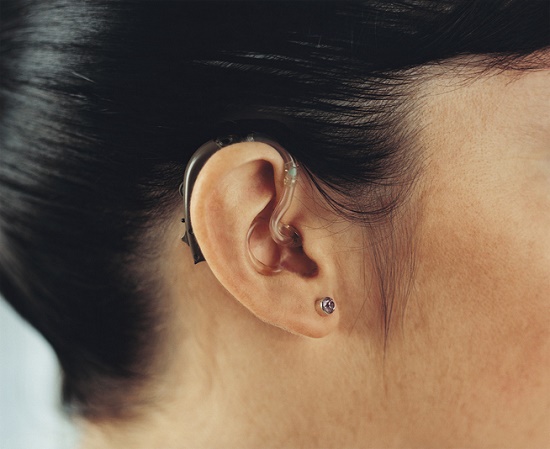
Have you ever had problems hearing in a congested room or restaurant but can hear without any problem at home? Do you have particular challenges hearing higher-pitched voices or TV dialogue?
If so, you might have hearing loss, and hearing aids might be able to help you.
But how do hearing aids work exactly? Are they simple amplifiers, or something more elaborate?
This week we’ll be looking at how hearing aids work and how they are a great deal more sophisticated than many people recognize. But first, let’s start with how normal hearing works.
How Normal Hearing Works
The hearing process starts out with sound. Sound is essentially a kind of energy that travels in waves, like ripples in a pond. Things produce sound in the environment when they generate vibrations in the air, and those vibrations are ultimately captured and transferred to the ear canal by the outer ear.
After passing through the ear canal, the sound vibrations strike the eardrum. The eardrum then vibrates, creating and amplifying the original signal which is then transmitted by the middle ear bones to the snail-shaped organ of the middle ear known as the cochlea.
The cochlea is filled with fluid and small nerve cells called cilia. The vibrations transferred from the middle ear bones shake the fluid and stimulate the cilia. The cilia then conduct electrical signals to the brain and the brain interprets the signals as sound.
With most instances of noise-induced hearing loss, there is injury to the cilia. So, the inbound signal to the brain is weaker and sounds seem softer or muffled. But not all sound frequencies are evenly weakened. Typically, the higher-pitched sounds, such as speech, are affected to a greater degree.
In a raucous setting, like a restaurant, your ability to hear speech is diminished because your brain is obtaining a weakened signal for high-frequency sounds. On top of that, background noise, which is low-frequency, is getting through normally, drowning out the speech.
How Hearing Aids Can Help
You can understand that the solution is not simply amplifying all sound. If you were to do that, you’d just continue to drown out speech as the background noise grows to be louder in proportion to the speech sounds.
The solution is selective amplification of only the frequencies you have a hard time hearing. And that is only possible by having your hearing professionally evaluated and your hearing aids professionally programmed to boost these particular frequencies.
How Hearing Aids Precisely Amplify Sound
Contemporary hearing aids consist of five internal parts: the microphone, amplifier, speaker, battery, and computer chip. But hearing aids are not just basic amplifiers—they’re sophisticated electronic devices that alter the attributes of sound.
This takes place by way of the computer chip. Everyone’s hearing is distinct, like a fingerprint, and so the frequencies you need amplified will differ. The astounding part is, those frequencies can be ascertained exactly with a professional hearing test, known as an audiogram.
Once your hearing professional has these figures, your hearing aid can be programmed to enhance the frequencies you have the most trouble with, improving upon speech recognition in the process.
Here’s how it works: the hearing aid receives sound in the environment with the microphone and transfers the sound to the computer chip. The computer chip then converts the sound into digital information so that it can differentiate between various frequencies.
Then, dependent on the programmed settings, the high-frequency sounds are enhanced, the low-frequency background sounds are repressed, and the improved sound is presented to your ear via the speaker.
So will your hearing return completely to normal?
While your hearing will not entirely return to normal, that shouldn’t prevent you from acquiring major gains in your hearing. For most individuals, the amplification provided is all they require to understand speech and participate in productive and effortless communication.
Think of it in this way. If your eye doctor told you they could improve your vision from 20/80 to 20/25, would you go without prescription glasses because you couldn’t get to 20/20? Of course not; you’d be able to function just fine with 20/25 vision and the gain from 20/80 would be enormous.
Are you ready to find out the gains you can attain with modern hearing aids? Give us a call today!
